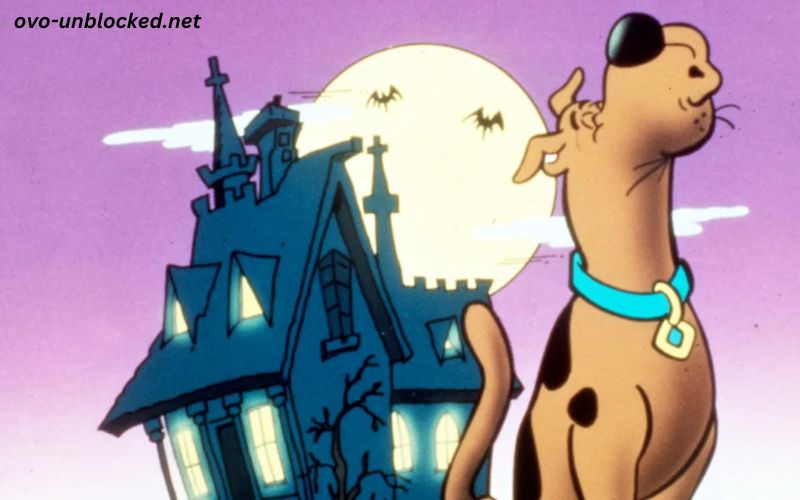Scooby-Doo, the lovable Great Dane who first appeared on television screens in 1969, has become an iconic figure in popular culture. Over the decades, Scooby-Doo has evolved from a simple animated character into a symbol of friendship, adventure, and mystery-solving. But beyond his role as a cartoon character, Scooby-Doo has also brought significant attention to his breed—the Great Dane. This article explores the history of Scooby-Doo, the characteristics of Great Danes, and how this animated dog has influenced perceptions of the breed and the world of animation.
The Origins of Scooby-Doo
Scooby-Doo was created by Joe Ruby and Ken Spears, two writers who worked for Hanna-Barbera, the famous animation studio. The show was originally conceived as a way to combine elements of mystery and humor, aimed at a young audience. The first episode, “What a Night for a Knight,” aired on September 13, 1969, and quickly became a hit.
The character of Scooby-Doo was voiced by Don Messick, who gave the dog his distinctive, somewhat goofy voice. Scooby-Doo’s name was inspired by Frank Sinatra’s scat singing in the song “Strangers in the Night,” specifically the phrase “dooby-dooby-doo.” This playful, melodic name perfectly suited the character, who was both comical and endearing.
Scooby-Doo’s Characteristics
Scooby-Doo is a large, brown Great Dane with distinctive black spots. He has a sloping back, a black nose, and a long tail. Despite his size and breed, which are typically associated with strength and courage, Scooby-Doo is famously cowardly. He often hides behind his best friend, Shaggy, when faced with danger, only to bravely confront the threat when it becomes absolutely necessary—especially when there’s food involved. This paradoxical mix of traits has made Scooby-Doo a relatable and beloved character.
The Great Dane: A Breed Apart
Great Danes, also known as the “Apollo of dogs,” are one of the largest dog breeds in the world. Originating in Germany, they were originally bred to hunt boars, a task that required both strength and courage. Despite their formidable size, Great Danes are known for their gentle and friendly nature. They are often referred to as “gentle giants” due to their calm demeanor and affectionate personality.
Physically, Great Danes are characterized by their tall, muscular bodies, broad heads, and deep chests. They have short, smooth coats that come in a variety of colors, including fawn, brindle, black, blue, harlequin (white with black patches), and mantle (black and white). Their average height ranges from 28 to 34 inches at the shoulder, and they can weigh anywhere from 100 to 200 pounds.
Great Danes have a relatively short lifespan for dogs of their size, typically living between 7 to 10 years. Despite this, they are cherished for their loyalty, intelligence, and protective nature. They make excellent family pets, though their size and strength mean they require proper training and socialization from an early age.
The Influence of Scooby-Doo on Great Dane Popularity
Scooby-Doo’s portrayal as a Great Dane has undoubtedly influenced public perceptions of the breed. Before Scooby-Doo, Great Danes were known primarily among dog enthusiasts and those familiar with large working breeds. However, the popularity of Scooby-Doo introduced this majestic breed to a much wider audience.
While Scooby-Doo’s personality is exaggerated for comedic effect, his gentle and friendly demeanor aligns with the real-life temperament of Great Danes. This has helped to dispel some of the myths and misconceptions about the breed, particularly the idea that large dogs are inherently aggressive or difficult to manage. In reality, Great Danes are known for their patience and loving nature, making them well-suited for families and individuals alike.
The portrayal of Scooby-Doo has also influenced people’s expectations of Great Danes. Many fans of the show have been inspired to adopt Great Danes, hoping to find a companion as loyal and endearing as Scooby-Doo. However, potential owners are often surprised to learn that real Great Danes, while gentle and affectionate, require significant care and attention due to their size and specific health needs.
Scooby-Doo’s Impact on Animation and Popular Culture
Beyond his influence on perceptions of the Great Dane breed, Scooby-Doo has left an indelible mark on the world of animation and popular culture. The success of “Scooby-Doo, Where Are You!” spawned numerous spin-offs, movies, and merchandise, making Scooby-Doo one of the most recognizable characters in the world.
The format of Scooby-Doo, which typically involves a group of teenagers solving mysteries with the help of their talking dog, has become a staple in animated storytelling. The show’s blend of humor, suspense, and family-friendly content has inspired countless other animated series, including “The Real Ghostbusters,” “Teenage Mutant Ninja Turtles,” and “Ben 10.”
Scooby-Doo’s popularity has also led to several crossovers with other franchises, further cementing his status as a cultural icon. Over the years, Scooby-Doo has teamed up with Batman, the Harlem Globetrotters, and even the WWE, showcasing his versatility as a character and his broad appeal.
The Legacy of Scooby-Doo
Scooby-Doo’s enduring popularity can be attributed to several factors. First and foremost is his relatability. Despite being a dog, Scooby-Doo exhibits human-like emotions and behaviors, making him a character that viewers of all ages can connect with. His love of food, his fear of the unknown, and his loyalty to his friends are traits that resonate with audiences, creating a bond that has lasted for generations.
Additionally, Scooby-Doo’s role as a hero who confronts his fears, often reluctantly, serves as a powerful message about courage and friendship. In a world filled with uncertainty, Scooby-Doo represents the idea that even the most unlikely heroes can make a difference when they work together.
Finally, Scooby-Doo’s status as a Great Dane has contributed to the breed’s image as gentle, loyal, and protective. While Scooby-Doo may be a fictional character, his impact on the real world is undeniable. Great Danes are now recognized not only for their size and strength but also for their kind hearts and gentle spirits, thanks in no small part to the influence of Scooby-Doo.
Conclusion
Scooby-Doo is more than just a cartoon character; he is a cultural icon who has left an indelible mark on the world of animation, popular culture, and even the perception of the Great Dane breed. Through his adventures, Scooby-Doo has entertained and inspired generations of viewers, teaching important lessons about friendship, courage, and the importance of confronting one’s fears. As a Great Dane, Scooby-Doo has also helped to shape the public’s understanding of the breed, highlighting their gentle and affectionate nature. While the real-life challenges of owning a Great Dane may differ from the antics of Scooby-Doo, the character has nonetheless played a significant role in promoting the breed and showcasing its many positive qualities. In the end, Scooby-Doo’s legacy is one of joy, laughter, and enduring friendship. Whether he’s solving mysteries with his friends or enjoying a Scooby Snack, Scooby-Doo continues to be a beloved figure who reminds us all of the power of loyalty, courage, and a good sense of humor.

